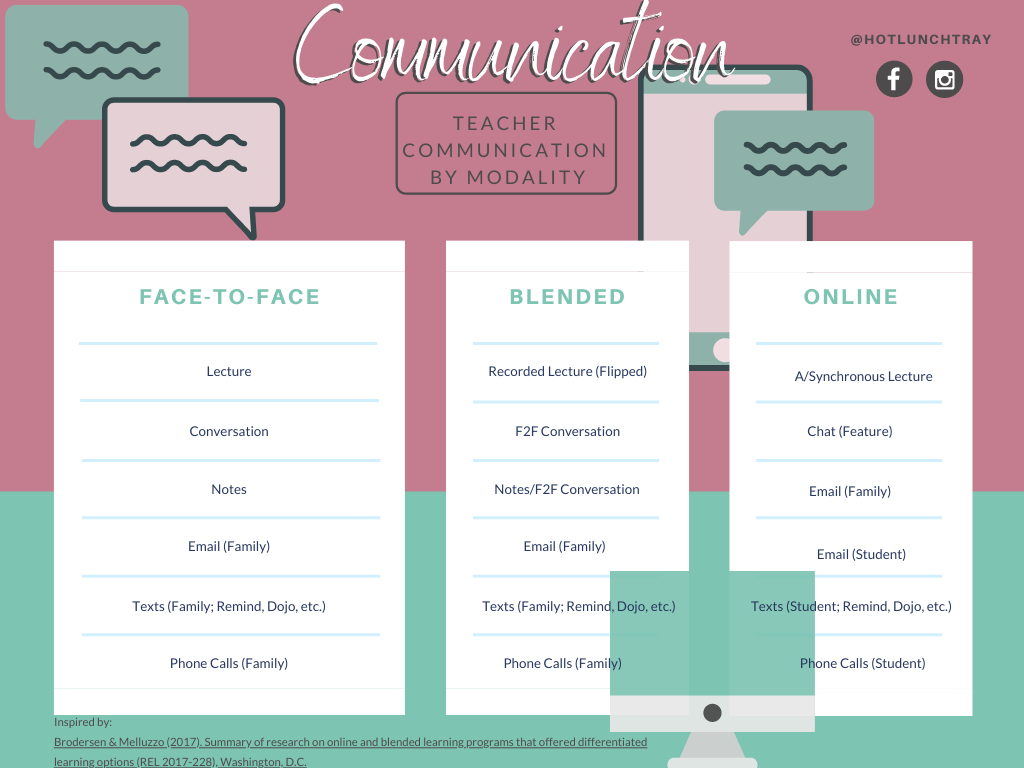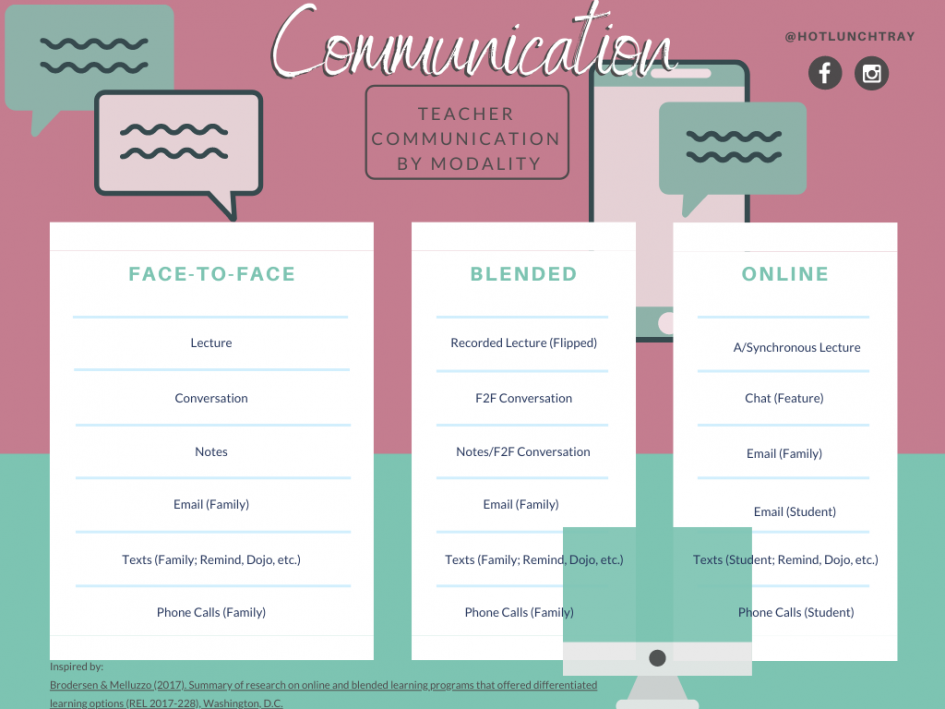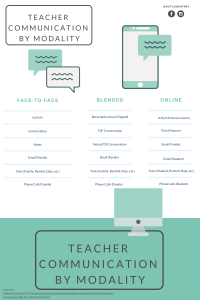Blended learning, online learning, and face-to-face learning are all different modalities of teaching. You can expect to see all of these modalities at some point in the 20-21 school year, some had that pleasure this past year as well. According to Brodersen and Melluso (2017) the greatest change in teacher communication occurs not when moving from face-to-face to a blended modality, but instead when moving from the blended to online modality.

Teacher Communication by Teaching Format
While Brodersen and Melluso (2017) do not speculate on the reasons why, that is almost exclusively what blogs do, so we will. Possible factors:
- The majority of America’s 3.7 million teachers (K-12 Enrollment Statistics, 2020) are confident in their physical cues to communicate (proximity, facial expressions, tone of voice, any informal cue)
- The basis of blended learning is “at least in part in a supervised brick-and-mortar location away from home” (Clayton Christensen Institute, 2016); without a physical place to learn together the learning is online – and so is the communication style.
- The age of the learner may necessitate younger or less mature students receive different types of communication: redundant communication with parents, more frequent communication, more specific/actionable communication
- College-bound students, and their families, may be more open to simulations of advance post-secondary learning environments, within the high school years
- Teachers with high numbers of fo students per class may find communication in the online modality more efficient
- Younger students may need more common teaching than older students, student-centric practices
When we think back to this past #RemoteLearning spring, realize that this was NOT strictly online learning {READ: Remote Learning is Something Different}. None of the procedures were stood up and tested in advance; families who expected a continuation of education may have only known face-to-face and blended instruction. Teachers may have only known face-to-face and blended communication techniques – which are both very similar to traditional, in-person school communication (Brodersen & Melluso, 2017).
Considering the face-to-face and blended modalities you may have used prior to the #RemoteLearning event of this past spring, what were your largest shifts in communication?
References
Brodersen, R. M., & Melluso, D. (2017). Summary of research on online and blended learning programs that offer differentiated learning options (REL 2017–228). Washington, DC: U.S. Department of Education, Institute of Education Sciences, National Center for Education Evaluation and Regional Assistance, Regional Educational Laboratory Central. Retrieved from https://files.eric.ed.gov/fulltext/ED572935.pdf.
Clayton Christensen Institute. (2016). Blended Learning. Retrieved from https://www.christenseninstitute.org/blended-learning/.
K-12 Enrollment Statistics (2020): Totals by Grade Level + More. (n.d.). Retrieved from https://educationdata.org/k12-enrollment-statistics/.







2 Pingbacks